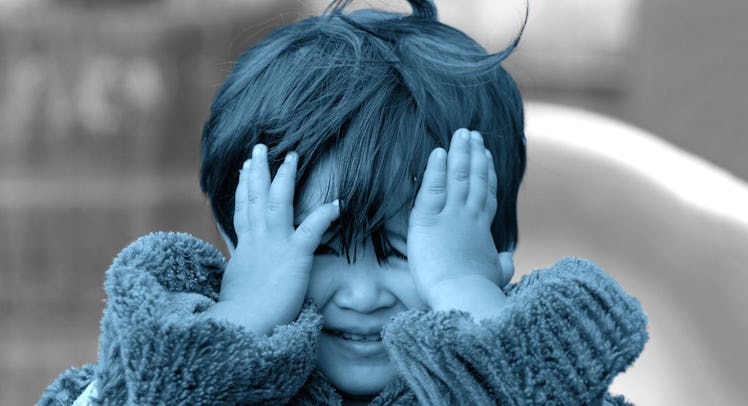When Do Kids Start Getting Traumatized By What They See?
The things children witness – in home, on the street, or on a screen – affect them immediately, but it’s the whole experience of childhood that determine if they are traumatic.

When infants feel insecure – whether due to the normal inconsistency of exhausted working parents or genuinely dangerous and frightening circumstances – the consequences can be insidious. Their underlying feelings and emotional responses reflect that insecurity, with the child having no specific memory as to why, even into adulthood.
Recall, or the ability to remember a specific event well enough to relate it to others, doesn’t develop until three or four years of age, but infants still form memories from the moment of their birth. Of course they do; the amount of learning they accomplish in their first two years is a pretty good demonstration of it. These memories can’t be recalled, though, because the brain hasn’t developed enough. Instead, these memories are implicit, a baseline of sorts that affects subsequent brain development such as language and emotional responses to stress. All memories affect behaviors – that’s what learning is – but fear, distress and frustration in infancy may have a longer-term impact on psychological development.
“If the child is frustrated too much … so that the child never dictates when they are fed, when they are hugged, when they are dry … then the child’s tolerance for frustration can be impaired,” explains Gemma Marangoni Ainslie, PhD, a private practitioner in Austin, Texas, and a faculty member of the Center of Psychoanalytic Studies. “And you’ll see that down the road – you’ll certainly see it in school, you’ll see it in terms of interpersonal playground spats, you’ll see it in terms of more than typical energetic refusal of a high chair.”
That’s because the memories are built functionally rather than as solid images to be recalled later. Because of that, it’s nothing a kid can point to as a cause of their short temper. That’s something that doesn’t happen until a child is able to communicate verbally, which arrives with a raft of other executive functions. But those functions also make exposure to frightening images or experiences a bit easier to deal with.
School-age kids can remember a frightening image or experience well enough to talk about it, which means they can talk about it with parents. And parents can guide kids as they try to figure out what they’ve seen within their own pool of experience. They don’t need to know the nuance of the Beaufort wind force scale, dinosaur anatomy or international politics. All they need is age-appropriate context and reassurance from parents.
“You can tell a story that gives truthful, veridical information, but make it age appropriate, at their level of understanding,” explains Ainslie. “All kinds of images call on the parent to translate for the child. Then their memories will be set in the context of what the parent offers about that image.”
A schoolchild may not be traumatized at all by scary images, as a matter of fact. Long-term emotional stability can be determined long before recall is possible. It depends on the particular experiences of infancy. An infant who feel sufficiently secure – with enough nutrition, enough sleep, and enough stimulation readily available on his or her schedule – may not consider any image particularly traumatic or overwhelming.
Parents do need to be gatekeepers of what their children see. But if they’re also diligent, attentive and emotionally stable in their child’s infancy, that child will have a better chance of coping with what they experience later in life.
This article was originally published on